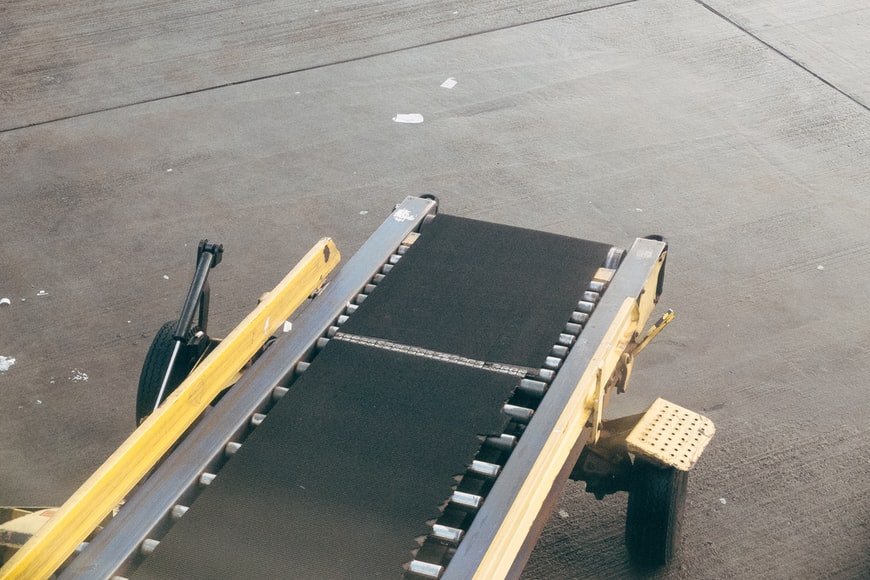In an industrial facility, conveyors belts to transport materials from one end to the other. These systems are used in various fields and are more than just a collection of unrelated elements. A conveyor system is an integrated system that relies on each component performing its function. Among the main features are the motor, the industrial gearbox, the pulley bearings, and the couplings.
When the system is incorrectly operated, belts can slip, motors can burn out, and components can break, among many other problems. Therefore, it is essential to maintain conveyor belts to make them more efficient and prolong their service life. Here are six tips to help keep your conveyor system.
Table Of Contents
Hire a Maintenance Technician
The men and women who wear tool belts are sometimes unrecognized heroes in every institution. One of the most common mistakes companies makes is failing to employ short-changing maintenance professionals.
Is it worth visiting the cheapest doctor in town if you are sick? It’s the same with your conveyor system — you need to get a good technician. A qualified technician will fix minor issues before they become major ones.

https://unsplash.com/photos/qEQGCHDVkKQ
It all boils down to your financial priorities. Would you instead spend it on missed sales and disgruntled consumers if your system fails and you can’t get your goods out the door or on a skilled maintenance engineer? Maintaining a conveyor system is no easy task, so ensure you choose a technician according to their experience and qualifications.
Use Your Conveyor as Intended
Conveyor belts are made in various ways depending on their desired functionality. They differ in terms of the kind of things they’re designed to move, the amount of weight they can support, and the pace at which they work.
https://unsplash.com/photos/zY8WM82id0s
As a result, if you buy a belt to serve a specific function, don’t use it to fulfil a different need. You can wind up putting too much tension on the conveyor belt, causing it to wear down faster. It may also run inefficiently, causing your processes to slow down.
Keep Up with Industry Standards
Your conveyor system might be performing admirably, but it may soon be rendered outdated when improved models take their place. Thus, you should keep plenty of spare components on hand if you suspect your conveyor may become obsolete. While keeping extra parts on hand may seem like a waste of money, you’ll discover that it’s much less expensive than upgrading your entire conveyor system.
Store the Spare Conveyor Belts Well
Spare conveyor belts should always be on standby if your present one breaks down. However, there’s a chance that the extra belt won’t work well, especially if it’s been stored wrongly. Light, moisture, and temperature are essential for keeping your extra conveyor belt.
If your substitute conveyor belt collects moisture, the materials weaken, increasing the likelihood of quick wear and tear, especially if you put a lot of pressure on it during your operations. To avoid this, make sure your storage site is suitable to keep your spare conveyor belts in good working order.
Clean It Regularly
Cleaning is a simple maintenance procedure that requires little effort. The task will determine the frequency at which the conveyor belt will be cleaned. If it’s intended to be used with food, you’ll need to clean it regularly to keep it clean to prevent food contamination. Depending on how quickly it accumulates dirt, you can clean the conveyor belt once or twice a week for non-food products.
https://unsplash.com/photos/oLS6IxceVNs
Make sure the conveyor belt is loose when you clean it so you can see the underside. Some workers neglect to clean this particular area. Not cleaning the bottom of the conveyor belt might diminish its effectiveness because dirt can gather and cause it to become heavier. The accumulation of dirt will increase the weight of the conveyor belt, reducing its carrying capacity. This will impact its workload since you may be unintentionally straining it.
Cleaning chemicals for conveyor belts are readily available at your local store. Just make sure you get the proper ones because some, such as caustic cleaning chemicals, might compromise the integrity of your conveyor belt.
Preventive Maintenance Is Essential
Prevention has always been better than cure, and you should apply the same logic to conveyor belt maintenance. Maintenance checks should be conducted regularly, every two weeks or once a month. Create a checklist of everything you need to examine to verify that the operation is appropriately performed. You won’t miss any parts if you do it this way.
You also want to think about doing daily inspections for the small things that keep your operations operating smoothly. An example of this would be the lubrication, the belt tension, and the tracking of the belt.
Make an effort to run these tests before you begin working. This minimizes the chance of unanticipated malfunctions, which might result in business downtime. Preventive maintenance allows you to see problems early on and fix them before they become serious.
Final Thought
Your conveyor belt is responsible for transporting your items from point A to B. Your conveyor belt must run smoothly and without issues to preserve the efficiency of your operations. Implementing the techniques mentioned above and practices can help you achieve this. This will assist in extending the life of your conveyor belt, lowering the likelihood of service disruptions.





